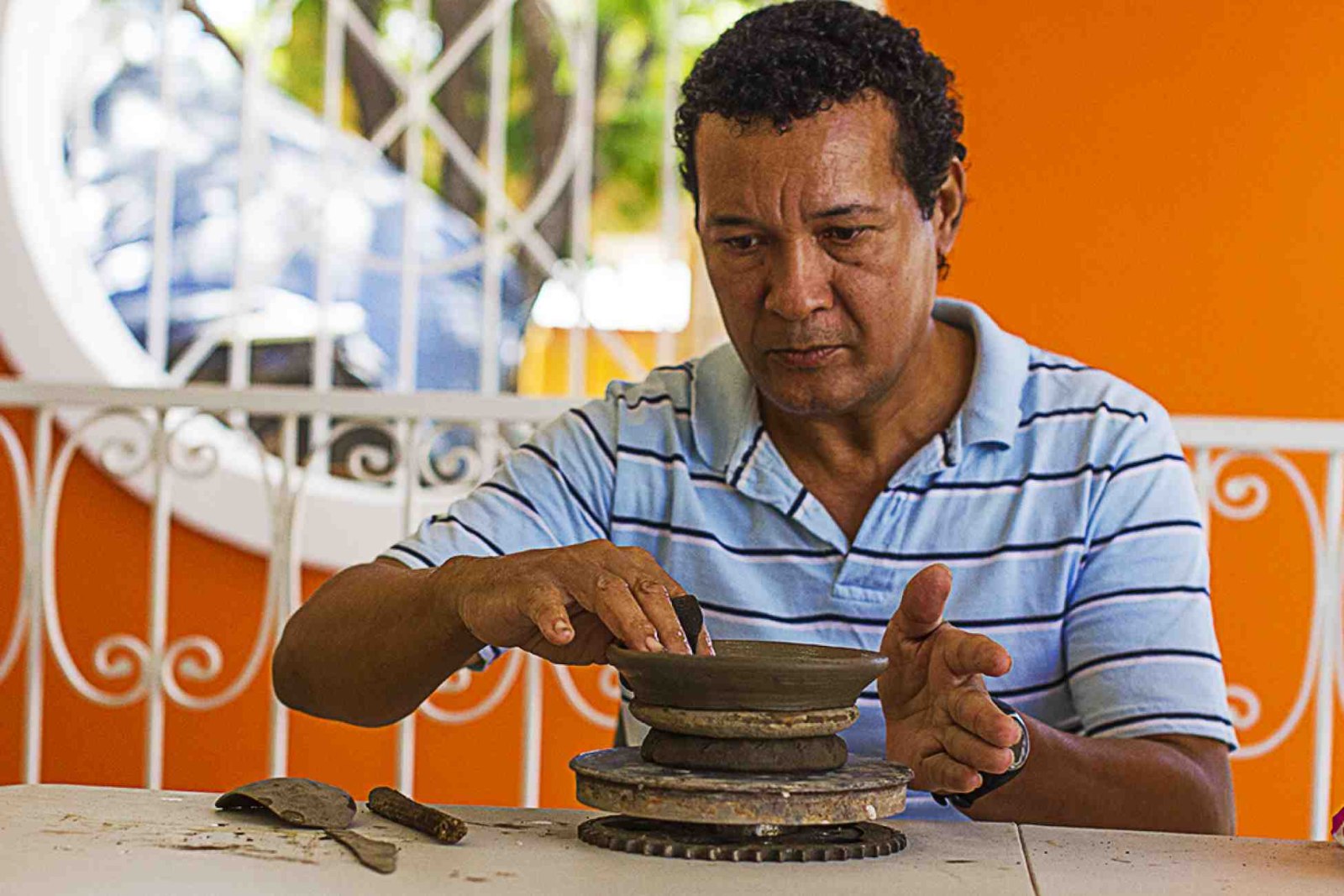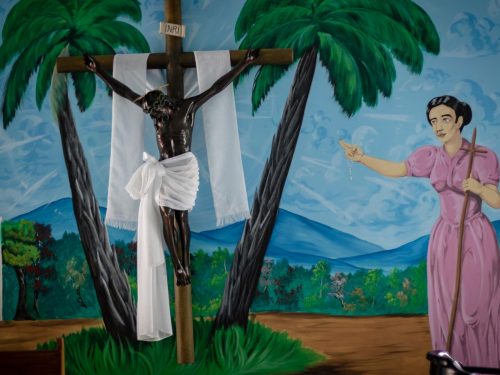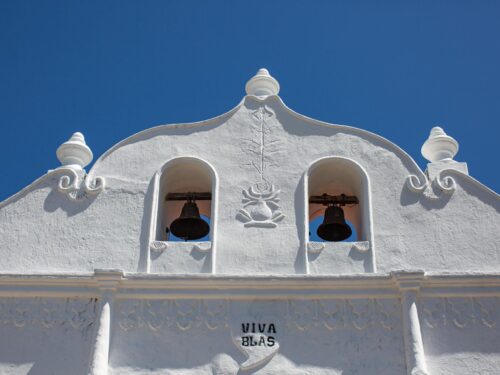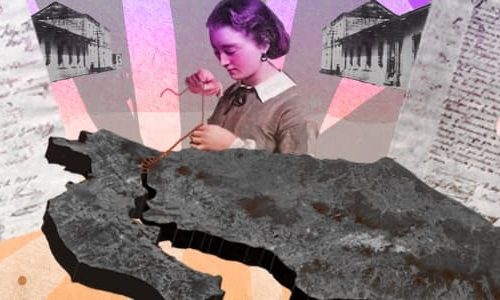
Why can’t Nicoya be an international cultural tourist destination? It was one of the first cities inhabited by the Spaniards when they arrived in this part of Central America around 1519. It was considered a strategic point for the meeting of cultures because descendants of the native Chorotega Indians and the legendary chief Nicoa lived in what is now called Nicoya.
Not only is Nicoya rich in stories worthy of being told out loud, but it can also show its history with the colonial church, the park, and some houses in the La Cananga neighborhood that still have features from the colonial era. You can dance under a full moon to the tune of La Yeguita (The Little Mare) or listening to some songs by contemporary artists, taste traditional foods or sweat during the group effort of the Pica e’ Leña (wood cutting festival). Farmers are working to keep the native fruits of the land alive, like purple pujagua corn, sapote squash and nispero (loquat fruit), among others.
Meanwhile, time passes and its historical and cultural heritage are not taken advantage of fully, which could very well boost the local economy and generate a brand for the canton that can position it nationally and internationally.
Abdenago “Nago” Torres Melendez, president of Radio Cultural and an expert on folklore who has studied and disseminated the Guanacaste culture, believes that those responsible for not promoting the culture and history of Nicoya are the Ministry of Culture, the Costa Rican Tourism Institute and the Municipality of Nicoya.
“People don’t understand and don’t know the truth about the culture of The Great Nicoya. There is a generation gap,” he explained.
Nago thinks that the Municipality of Nicoya needs to declare the canton a “Transcendental National Historical Population of Costa Rica and the World.” With this distinction, he believes that the Ministry of Culture might show more interest in Nicoya and allocate more resources for the cultural part.
In addition, Torres indicated that new cultural and historical sites could be set up in addition to revamping the few that exist, such as the Church of San Blas. “The Church of Nicoya is the main attraction that the canton has because it combines the pre-Columbian and colonial legacy.” The church, whose original construction dates to 1544 according to Victor Cabreras, is closed to the public due to being damaged by the 2012 earthquake.
He also pointed out the colonial square of Recaredo Briceño Park as a Nicoyan cultural landmark to show visitors the games and customs of the Chorotegas, such as the Volador (Flying) dance (see infographic), or another game that could be represented, according to Nago, is the Comelagatoazte, a game similar to swinging in which players sway up and down (see infographic).
In addition, Torres Melendez, explained that the square of the park can develop cultural activities, sales Creole food, as well as parts and utensils Columbian era.
Additionally, a museum should be set up of pre-Columbian replicas of the artisans of San Vicente and Guaitil, who only interact with the public in their villages, about 20 kilometers (12.5 miles) from the city.
On the other hand, Nelson Gamboa, president of the Nicoya Chamber of Commerce, was harsher in his opinion, affirming that the only thing left of Nicoya culturally is its name. According to him, the reason for this is the lack of interest from business people who are apathetic and conformist about the subject.
“Most business owners here are not from Nicoya. That’s why they aren’t interested in its culture. Currently Nicoya doesn’t have a Chamber of Tourism. There should be a group of business people directly involved in the tourism sector associated with hotels and restaurants. People think that coming to Nicoya only means going to the beaches. They live under a very apathetic and conformist regime,” he commented.
Enormous Potential
According to the latest records of the Nicoya office of the Costa Rican Tourism Institute (ICT-Instituto Costarricense de Turismo), the southern part of Guanacaste (Nandayure, Hojancha, Nicoya) was visited by about 111,677 tourists in 2009, which corresponds to 7.3% of the 1,922,579 who visited the country that year.
However, three years later, in 2012, the influx of tourists into the country increased to 2,343,213, almost 25% more compared to 2009, so they estimate that tourist arrivals have likewise grown in Guanacaste and Nicoya.
In 2014, tourists stayed an average of eight nights in the province and spent about $800 USD, according to figures from ICT. The colonial city could get a share of these figures if Nicoya managed to establish itself as a cultural and historical tourist destination.
Meanwhile, Marco Jimenez, municipal mayor, thinks that addressing the subject of culture requires the participation of the municipality along with the various community players. “I think that an adequate cultural policy requires the participation of private and institutional players,” he said.
Also regarding cultural plans that the municipality has, the mayor reported that for 2015, they expect to set up the ethnographic museum, which is located under the pavilion in Recaredo Briceño Park and has not yet been completed. They plan to have pre-Columbian artifacts and works from the artisans of San Vicente and Guaitil there.
Additionally, Jimenez indicated that in early 2015, officials from the Ministry of Culture visited and toured the Church of Nicoya, which is closed due to deterioration.
“The church is closed because it is crumbling. The administration of President Chinchilla left 145 million colones (about $273,500) available to rebuild the church, and now this year there is the possibility of using the funds,” said the mayor.








Comments